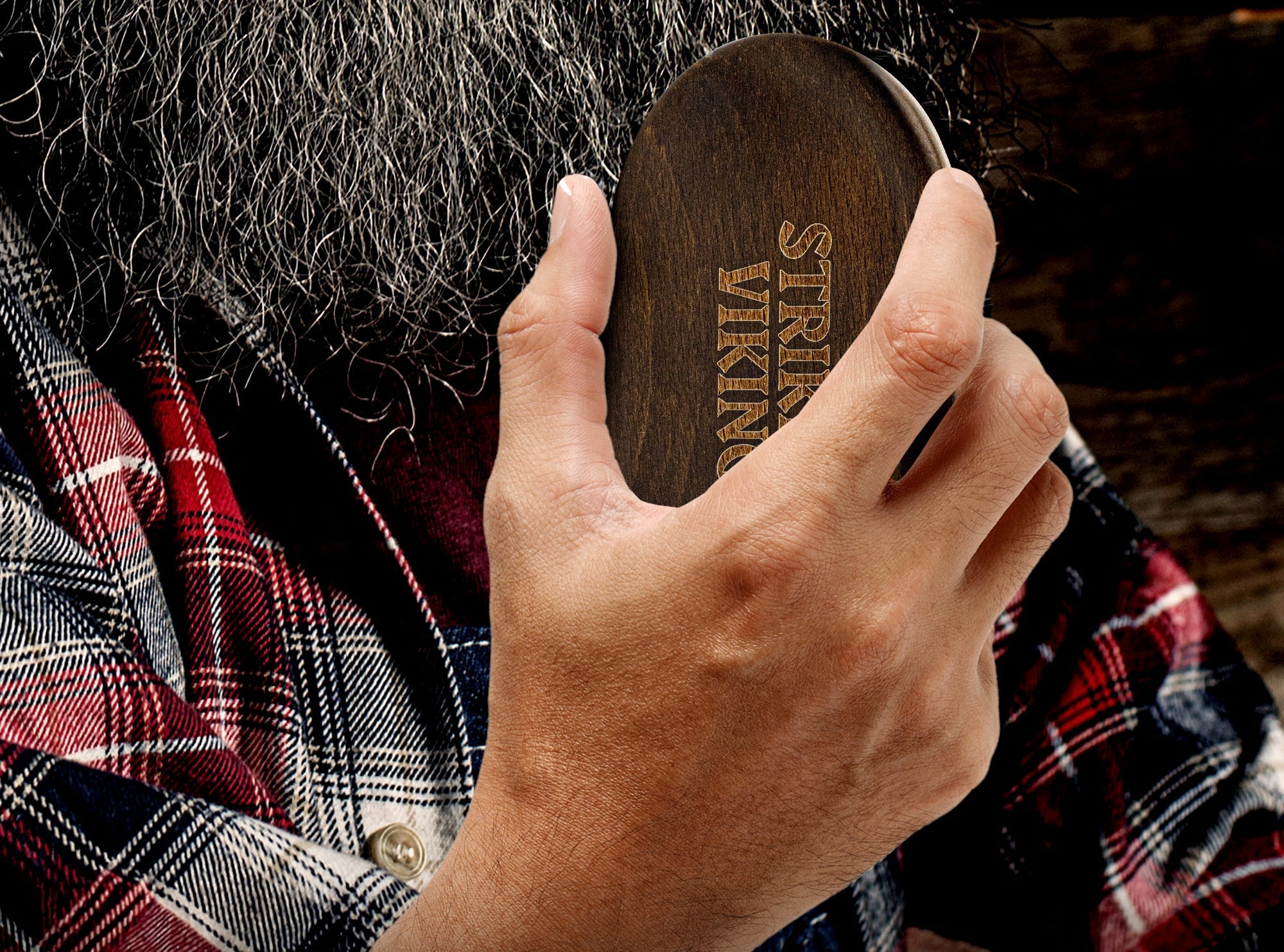There’s an unspoken rivalry among beard-care tools: the comb and the brush. Each has its place. Each has its strengths. If you’re serious about your facial hair, it isn’t about choosing sides so much as knowing when to draw the lines. And yes—the Striking Viking Boar Hair Beard Brush brings its own arsenal to the table.
The Lay of the Land: Brush vs Comb
| Tool | What It’s Great For | What It Doesn’t Do So Well |
|---|---|---|
| Beard Brush (boar bristle, wood, etc.) | Distributes natural oils, smooths frizz, adds shine, gives a “finished” look, kind to skin underneath | Less precise on shaping, tricky in tight spots, can be tough with very thick or curly beards without prep |
| Beard Comb (wide teeth, folding, etc.) | Detangling, definition of lines & edges, targeting patches, styling details | May cause static, can snag if low quality, doesn’t smooth as naturally, less oil distribution |
Meet The Brush: Striking Viking Boar Hair Beard Brush
This brush is built for more than just show. Let’s highlight what makes it a battle-worthy piece in the comb-vs-brush game:
-
Naturally tough boar bristles that grab those little fly-aways, tame frizz, and actually distribute the oils from your skin down through your beard. No more greasy roots + dry tips.
-
Beech wood handle = grip, durability, style. You want something that feels like gear, not like flimsy plastic. It looks good, lasts, and holds up in daily wear.
-
Unmistakably designed for shine, tidiness, and polish. If your beard is looking like a jumble of chaos after a sweaty day or rainstorm, the brush is your revival tool.
When to Use What: Strategy For Your Beard
Here’s how a badass beard owner juggles the two:
-
Morning routine: Start with a comb to detangle and define. You can carve lines, part it just right, get those patches evened out.
-
Midday / movement: Use the brush if things get fuzzy, wind tosses things around, or the beard starts to look dry. The brush smooths, refines, and keeps it looking polished.
-
After applying oils / balm: Brush helps distribute those products evenly. Combing can work, but doesn’t always push oils deep into the under-beard.
-
Travel / touch-ups: Folding combs or portable combs win here. But even the brush becomes essential in environments (dust, cigarette smoke, etc.) that rough up your beard.
Which Tool For Which Beard Type?
-
Short / stubble / patchy beard: Comb first, brush sparingly. Comb helps with shape and evenness. Brush gives polish.
-
Medium / dense beard: Both tools shine. Comb out tangles, then brush to smooth and boost shine.
-
Long / coarse curls: Combs with wide teeth are a must to avoid breakage. Brushes help after conditioning and oiling, but must be used gently to prevent damage or loss.
Final Call: Don’t Pick Sides, Arm Yourself
A comb will get you defined edges and tactical style. A brush will bring out sheen, smoothness, and that controlled look. The Striking Viking Boar Hair Beard Brush (Beech Wood) isn’t here to replace combs—it’s here to complement them.
If your beard is part of your image, then your toolkit needs to be tactical. Use the brush when you want polish. Use the comb when you need structure. Use both if you want to look like you walk the line between refined and rugged.
👉 Explore our Combs & Brushes here and add to your beard's arsenal now!






















